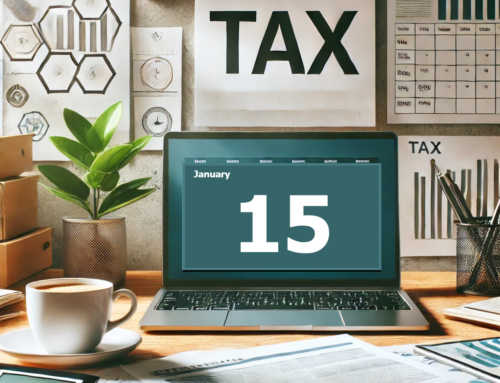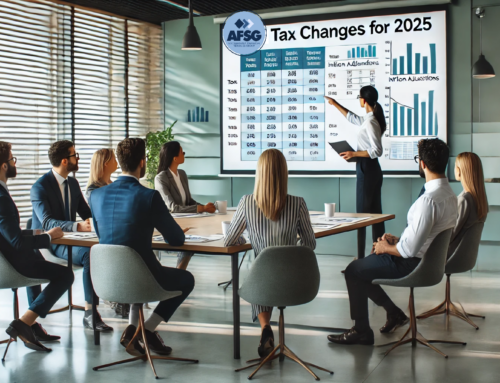Mid-June estimated tax payment deadline in sight for many taxpayers
WASHINGTON — The Internal Revenue Service today reminded taxpayers of the 2023 second quarter estimated tax deadline. Those who pay estimated taxes should consider the June 15 deadline to stay current with their taxes.
Estimated tax is the method used to pay tax on income that isn’t subject to withholding. Payments are normally made by self-employed individuals, retirees, investors, businesses, corporations and others that do not have taxes withheld.
Taxes are pay-as-you-go
This means taxpayers need to pay most of the tax they expect to owe during the year, as income is received. There are two ways to do that:
- Withholding from pay, pension or certain government payments, such as Social Security.
- Making quarterly estimated tax payments during the year.
Taxpayers may also have to pay estimated tax if the amount of income tax being withheld from their salary, pension or other income isn’t enough. If necessary, those who receive a salary or wages can avoid having to pay estimated taxes by asking their employer to withhold more tax from their earnings. To do this, taxpayers should submit a new Form W-4, Employee’s Withholding Certificate, to their employer.
Who must pay estimated tax?
Individuals, including sole proprietors, partners and S corporation shareholders, generally must make estimated tax payments if they expect to have a tax liability of $1,000 or more when they file their return.
Individual taxpayers can use the IRS Interactive Tax Assistant online to see if they are required to pay estimated taxes. They can also see the worksheet in Form 1040-ES, Estimated Tax for Individuals, for more details on who must pay estimated tax.
Corporations generally must make estimated tax payments if they expect to owe tax of $500 or more when they file their return. Corporations can see Form 1120-W, Estimated Tax for Corporations, for more information.
Publication 505, Tax Withholding and Estimated Tax, has additional details, including worksheets and examples, that can be especially helpful to those who have dividend or capital gain income, owe alternative minimum tax or self-employment tax, or have other situations.
More people will receive 1099-Ks
Starting in 2023, taxpayers who were paid more than $600 electronically through a payment card or online marketplace for doing a side hustle, running a small business or selling things could receive a Form 1099-K, Payment Card and Third Party Network Transactions. Typically, they’ll receive these reporting forms by January 31. The $600 reporting threshold is lower than it’s been in the past.
The IRS encourages taxpayers earning income that’s not normally subject to withholding to consider making estimated tax payments throughout the year to stay current and avoid a surprise at tax time.
How to pay estimated taxes
An electronic payment is the fastest, easiest and most secure way for individuals to make an estimated tax payment. Taxpayers can securely log into their IRS Online Account or use IRS Direct Pay to submit a payment from their checking or savings account. Taxpayers can also pay using a debit card, credit card or digital wallet. Taxpayers should note that the payment processor, not the IRS, charges a fee for debit and credit card payments. Both Direct Pay and the pay by debit card, credit card or digital wallet options are available online at IRS.gov/payments and through the IRS2Go app.
Taxpayers can also use the Electronic Federal Tax Payment System (EFTPS) to make an estimated tax payment. Payment by check or money order made payable to the “United States Treasury” is also an option. Form 1040-ES, Estimated Tax for Individuals, includes instructions to help taxpayers figure their estimated taxes.
Corporations must use electronic funds transfer to make all federal tax deposits (such as deposits of employment, excise and corporate income tax). This includes installment payments of estimated tax. Generally, an electronic funds transfer is made to use the EFTPS.
How to avoid an underpayment penalty
Taxpayers can avoid an underpayment penalty by owing less than $1,000 at tax time or by paying most of their taxes during the year. Generally, for 2023 that means making payments of at least 90% of the tax expected on their 2023 return, or at least 100% of the tax shown on their return for tax year 2022.
Special rules apply to some groups of taxpayers such as farmers, fishermen, certain higher income taxpayers, casualty and disaster victims, those who recently became disabled, recent retirees and those who receive income unevenly during the year.
Tax Withholding Estimator
The Tax Withholding Estimator offers a step-by-step method for effectively ensuring taxpayers have the right amount of tax withheld from their paychecks or other income that is subject to withholding.
Using the Tax Withholding Estimator can help taxpayers prevent having too little tax withheld and facing an unexpected tax bill or penalty at tax time next year.
Third quarter payments are due Sept. 15 and the final estimated tax payment for tax year 2023 is due on Jan. 16, 2024.



